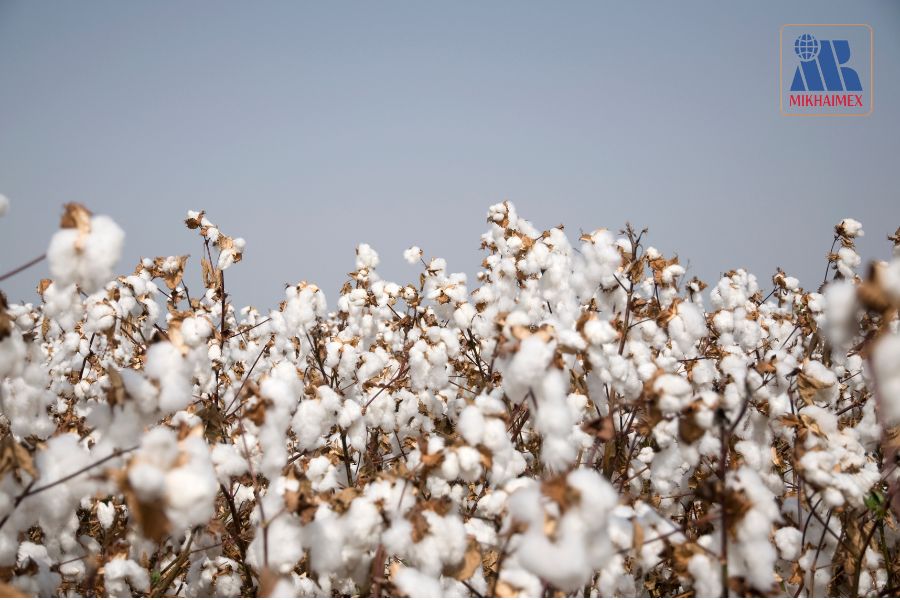Factors Influencing the Fluctuations of Cotton Fiber Prices
The price of cotton fiber is a crucial factor that directly affects the textile and fashion industries. Understanding the factors impacting cotton fiber prices helps businesses plan effectively and make informed buying and selling decisions. Below are the key factors influencing cotton fiber prices that you should be aware of.

Supply and Demand of Cotton in the International and Domestic Markets
The principle of supply and demand determines the price and transaction volume of cotton in the market. According to the supply-demand principle, cotton prices will change based on the supply level and consumer demand. When the supply of cotton meets market demand, prices stabilize. Conversely, if supply exceeds demand or demand exceeds supply, cotton prices will fluctuate accordingly.
The supply of cotton depends on the yield and quality of cotton plants, cultivation area, production and processing costs, and the technologies used. Additionally, government support policies and weather conditions play significant roles. On the demand side, consumer needs and purchasing power, along with competition from other fibers such as synthetic fibers, wool, and silk, also affect cotton fiber prices.

Exchange Rate Fluctuations, Especially the USD
Exchange rates, particularly the USD, have a strong impact on cotton fiber prices. When the USD/VND exchange rate increases, it means the Vietnamese Dong depreciates against the USD. This increases the cost of importing cotton from international markets, consequently raising cotton prices in the domestic market. Conversely, when the USD/VND exchange rate decreases, the Vietnamese Dong strengthens, reducing import costs and lowering cotton prices, enhancing the competitiveness of Vietnamese cotton in the international market.
Exchange rate fluctuations also affect other factors such as inflation, interest rates, income, and trade exchanges, all of which can indirectly impact cotton fiber prices.
Weather and Natural Disasters Impacting Cotton Yield and Quality
Weather and natural disasters are uncontrollable factors but have significant effects on the growth and yield of cotton plants. Adverse weather conditions like drought, floods, storms, and frost can severely damage cotton plants, reducing yield and quality, thus driving cotton prices up.
For instance, in 2021, Vietnam experienced 12 storms and tropical depressions, causing widespread heavy rains and flooding. This situation not only reduced cotton output but also increased production and storage costs, pushing cotton prices higher.
Trade Policies and Economic Cooperation
Trade policies and economic cooperation agreements between countries also significantly affect cotton fiber prices. Import taxes, quotas, and other protectionist measures can increase the cost of importing cotton, affecting domestic market prices. Conversely, free trade agreements (FTAs) can reduce or eliminate tariffs, facilitating lower-cost cotton imports.
Future Forecasts for Cotton Fiber Prices
In the coming period, cotton fiber prices may be influenced by several factors, including global economic fluctuations, supply and demand conditions, and changes in trade policies and tariffs. Forecasts indicate that cotton prices may increase due to economic recovery post-pandemic and rising demand for textile products. However, factors like climate change and economic instability can cause unpredictable price fluctuations.
Risks and Benefits of Investing in Cotton Fiber
Risks:
- Price Volatility: Cotton fiber prices can fluctuate significantly due to factors such as weather, trade policies, and global economic changes.
- Policy Risks: Changes in tariff and trade policies can affect import and export costs of cotton.
- Market Risks: Competition from alternative fibers like synthetic and wool can impact demand and prices of cotton fiber.
Benefits:
- Stable Demand: Cotton fiber is a primary raw material in the textile industry, with steady demand from apparel and home textile manufacturers.
- Growth Potential: Global economic recovery and increasing demand for textile products can drive cotton prices up.
- Environmental Benefits: Using organic cotton fiber and sustainable farming methods helps protect the environment and meets the growing consumer demand for green products.
Understanding and grasping the factors influencing cotton fiber prices is crucial for businesses in the textile industry. From adjusting supply and demand, managing exchange rate fluctuations, to dealing with weather variations, all need careful consideration to formulate effective business strategies.
Recommendations from Minh Khai Textile Company

Minh Khai Textile Company continuously monitors these factors to ensure high-quality cotton fiber products at reasonable prices, meeting diverse customer needs and maintaining market competitiveness. We are committed to providing quality cotton products that are environmentally friendly and contribute to sustainable development


